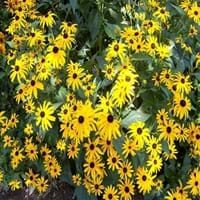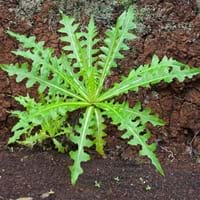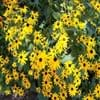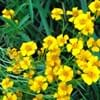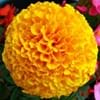Origin
Not Available
Europe
Types
Topeka Purple Coneflower, Pale Purple Coneflower
Not Available
Habitat
open Woodlands, Roadsides
Cultivated Beds, Waste areas
USDA Hardiness Zone
4-10
6-9
AHS Heat Zone
9 - 1
Not Available
Sunset Zone
1a, 1b, 2a, 2b, 3a, 3b, 4, 5, 6, 7, 8, 9, 10, 11, 12, 13, 14, 15, 16, 17, 18, 19, 20, 21, 22, 23, 24
Not Available
Habit
Clump-Forming
Clump-Forming
Minimum Height
Not Available
Minimum Width
Not Available
Flower Color
Yellow, Gold, Chocolate
Yellow
Flower Color Modifier
Bicolor
Bicolor
Fruit Color
Chocolate, Black
White
Leaf Color in Spring
Green
Light Green, Gray Green
Leaf Color in Summer
Green
Light Green, Gray Green
Leaf Color in Fall
Green, Yellow green
Not Available
Leaf Color in Winter
Light Green
Light Green
Leaf Shape
Elliptic
Arrowhead
Plant Season
Summer, Fall
Not Available
Sunlight
Full Sun
Full Sun, Partial Sun
Growth Rate
Fast
Very Fast
Type of Soil
Clay, Loam
Clay, Loam, Sand
The pH of Soil
Acidic, Neutral, Alkaline
Acidic, Neutral, Alkaline
Soil Drainage
Average
Average
Bloom Time
Early Summer, Summer, Late Summer, Early Fall
Late Spring, Early Summer
Tolerances
Rocky Soil
Drought
Where to Plant?
Container, Ground, Pot
Ground
How to Plant?
Seedlings, Stem Planting
Seedlings
Plant Maintenance
Medium
Medium
Watering Requirements
Do Not over Water, Do not water frequently, Never Over-water, Requires regular watering
Requires regular watering
In Summer
Lots of watering
Lots of watering
In Spring
Moderate
Moderate
In Winter
Average Water
Average Water
Soil pH
Neutral, Slightly Acidic
Neutral
Soil Type
Loamy, Well drained
Moist
Soil Drainage Capacity
Loamy, Sandy, Well drained
Well drained
Sun Exposure
Full Shade, Partial Sun
Full Sun
Pruning
Prune after flowering, Prune to stimulate growth, Remove damaged leaves, Remove dead leaves, Remove dead or diseased plant parts, Remove deadheads
Remove damaged leaves, Remove dead branches, Remove dead leaves
Fertilizers
as it is a flowering plant, use high phosphorous content fertilizer, fertilize in growing season, fertilize in spring, organic fertlizers
All-Purpose Liquid Fertilizer
Pests and Diseases
Beetles, Grasshoppers, Leafhoppers, Powdery mildew, Red blotch, Slugs, Snails
Red blotch
Plant Tolerance
Rocky Soil
Drought
Flower Petal Number
Single
Single
Foliage Texture
Medium
Medium
Foliage Sheen
Matte
Matte
Attracts
Birds, Butterflies
Butterflies
Allergy
Avoid during Pregnancy, Dizziness, Headache, Nausea, Rash, Vomiting
Not Available
Aesthetic Uses
Beautification, Landscape Designing, Showy Purposes
Showy Purposes
Beauty Benefits
Not Available
Not Available
Environmental Uses
Air purification, Food for insects, Prevent Soil Erosion, Versatility, Very little waste
Air purification
Medicinal Uses
Cold, Ear ache, Eczema, Eye Problems, Headache, Migraines, Urinary tract problems
Anxiety, Cough, Insomnia, Rheumatism, Wounds
Part of Plant Used
Leaves
Flowers, Leaves
Other Uses
Air freshner, Decoration Purposes, Showy Purposes, Used as Ornamental plant
Showy Purposes
Used As Indoor Plant
Yes
No
Used As Outdoor Plant
Yes
Yes
Garden Design
Container
Not Available
Botanical Name
RUDBECKIA 'Tigereye'
LACTUCA serriola
Common Name
Coneflower, TigerEye Black-eyed Susan, TigerEye Coneflower
Compass Plant, Horse Thistle, Prickly Lettuce
In Hindi
coneflower
Prickly Lettuce
In German
Sonnenhut
Feigensalat
In French
coneflower
laitue scariole
In Spanish
equinácea
lechuga espinosa
In Greek
coneflower
φραγκοσυκιές Μαρούλι
In Portuguese
Coneflower
alface espinhosa
In Polish
jeżówka
Kolczasta Sałata
In Latin
coneflower
Opuntia Lactuca
Phylum
Echinodermata
Magnoliophyta
Class
Magnoliopsida
Magnoliopsida
Order
Asterales
Asterales
Family
Asteraceae
Asteraceae
Clade
Angiosperms, Asterids, Eudicots
Angiosperms, Asterids, Eudicots
Tribe
Heliantheae
Cichorieae
Subfamily
Asteroideae
Not Available
Number of Species
Not Available
Importance of Coneflower and Prickly Lettuce
Want to have the most appropriate plant for your garden? You might want to know the importance of Coneflower and Prickly Lettuce. Basically, these two plants vary in many aspects. Compare Coneflower and Prickly Lettuce as they differ in many characteristics such as their life, care, benefits, facts, etc. Every gardener must at least have the slightest clue about the plants he wants to plant in his garden. Compare their benefits, which differ in many ways like facts and uses. The medicinal use of Coneflower is Cold, Ear ache, Eczema, Eye Problems, Headache, Migraines and Urinary tract problems whereas of Prickly Lettuce is Anxiety, Cough, Insomnia, Rheumatism and Wounds. Coneflower has beauty benefits as follows: Not Available while Prickly Lettuce has beauty benefits as follows: Not Available.
Compare Facts of Coneflower vs Prickly Lettuce
How to choose the best garden plant for your garden depending upon its facts? Here garden plant comparison will help you to solve this query. Compare the facts of Coneflower vs Prickly Lettuce and know which one to choose. As garden plants have benefits and other uses, allergy is also a major drawback of plants for some people. Allergic reactions of Coneflower are Avoid during Pregnancy, Dizziness, Headache, Nausea, Rash and Vomiting whereas of Prickly Lettuce have Not Available respectively. Having a fruit bearing plant in your garden can be a plus point of your garden. Coneflower has no showy fruits and Prickly Lettuce has no showy fruits. Also Coneflower is not flowering and Prickly Lettuce is not flowering . You can compare Coneflower and Prickly Lettuce facts and facts of other plants too.
